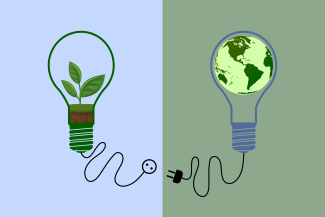It will surprise no one that Inflation Reduction Act implementation is a critical priority for 2024. Eighteen months after the IRA was signed, we’re starting to see the shape, scale, and strategy of some of its programs, and how its nearly $400 billion is being put into play to help realize the transition to a clean energy economy.

One of the most important aspects of the IRA is that it embraces a whole-of-society approach, with its financial incentives designed to provide support across sector value chains. It’s hard to overstate how important this approach is to enable systemic change at the scale needed to shift our economy. Take electric vehicles, for example. You can’t increase sales without increasing charging infrastructure; you can’t increase production without increasing critical minerals mining; and so on.
Last November, ELI’s GreenTech initiative worked with the Georgetown Climate Center and Georgetown Environmental Law & Policy Program to host a multi-stakeholder discussion around IRA implementation. (You can view recordings and other materials at greentechconference.org.) Featuring expert speakers across a variety of industrial sectors and jurisdictional scales—with particular emphasis on power, transportation, and carbon management—the discussion looked at the landscape of the IRA and homed in on where we are seeing progress, where we are encountering obstacles, and where there are gaps.
Those conversations highlighted how many programs are being operationalized that truly do embrace a complete value chain or full lifecycle approach, and this is cause for optimism. To stay on the electric vehicles example, increased charging infrastructure requires increased transmission, which we are trying to figure out how to accelerate; increased critical mineral mining must occur domestically and faces challenges ranging from general public concern to concerns about specific sites; etc. At the same time, many questions remain unanswered and tensions unaddressed, where more work is needed to find the path forward.
Which brings us to the other aspect of a whole-of-society approach, which isn’t about the economy, or sectors, or siloed functionalities—it’s about people. It’s about ensuring everyone is considered in the clean energy transition, that no one is overlooked. On this front, the Biden administration’s Justice40 initiative is key. To date we’ve seen the development of screening tools, equity action plans, community benefits plans, and EPA recently announced it is readying $2 billion in environmental justice spending, arguably the largest allocation ever. But we are still waiting to see if these efforts yield the intended benefits. Returning to the EVs example, novel approaches may be needed to ensure benefits aren’t limited to high-income areas and to elevate community voices in siting decisions.
The clean energy transition is a transformation of our economy, and it truly requires a whole-of-society approach. We’re on the track, but it’s neither easy nor simple, and we have a ways to go.
